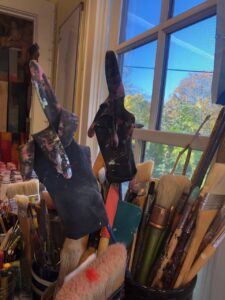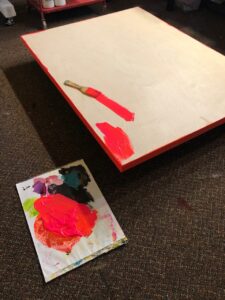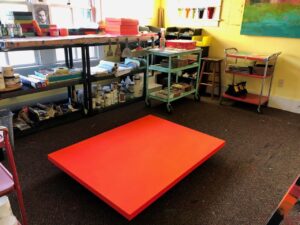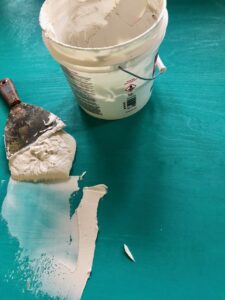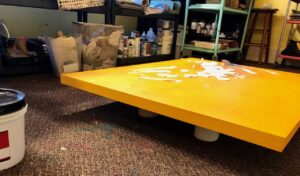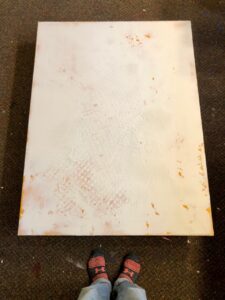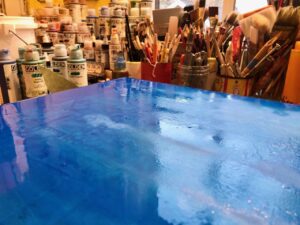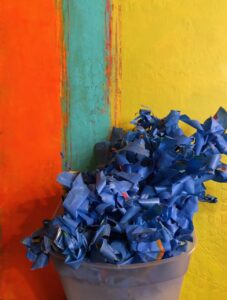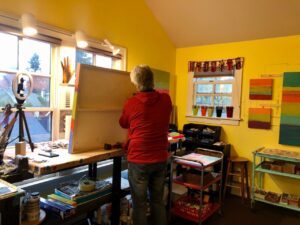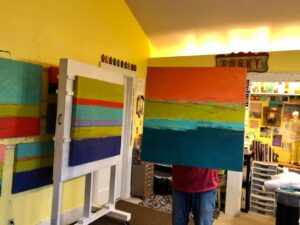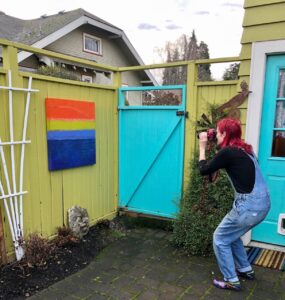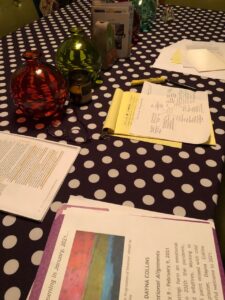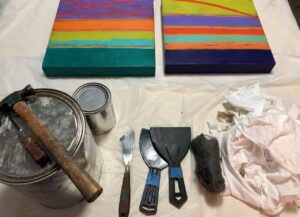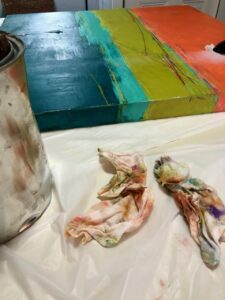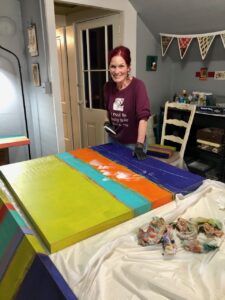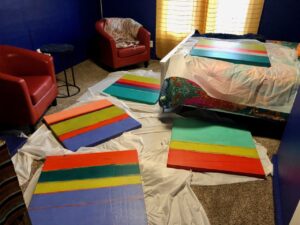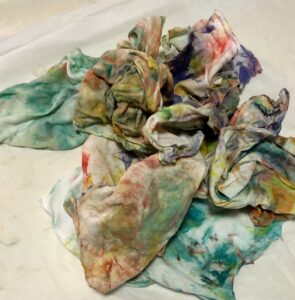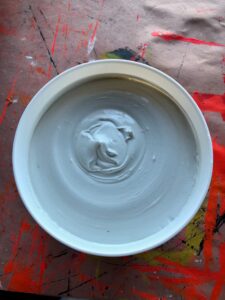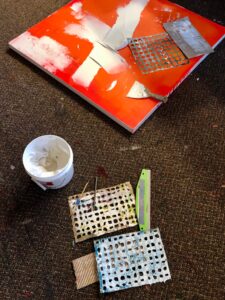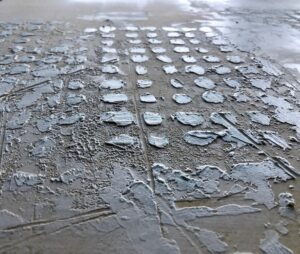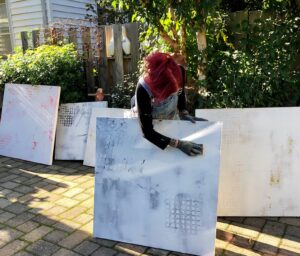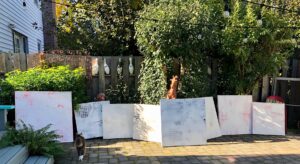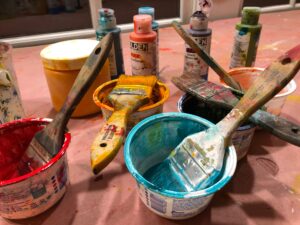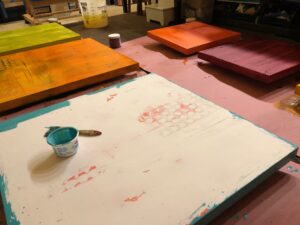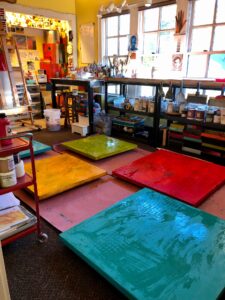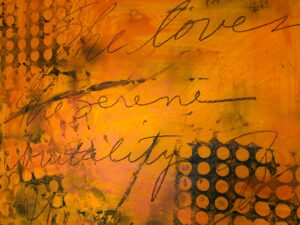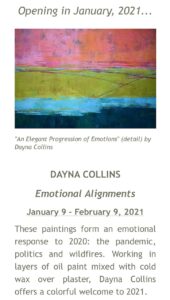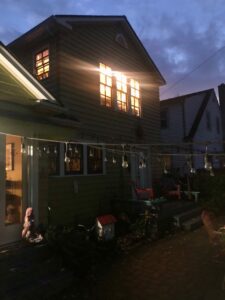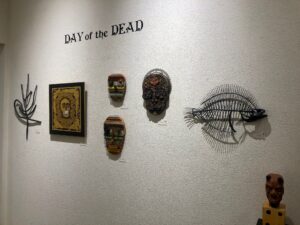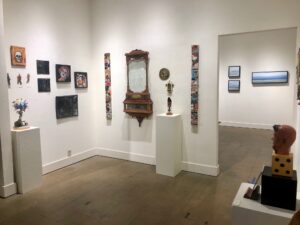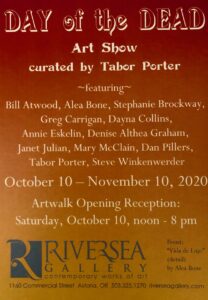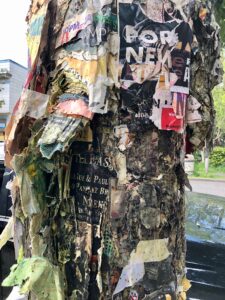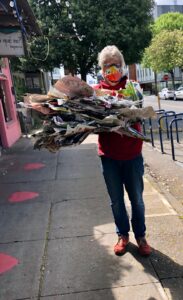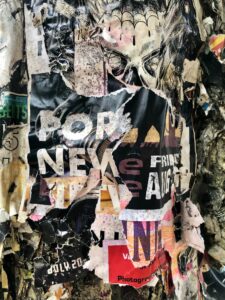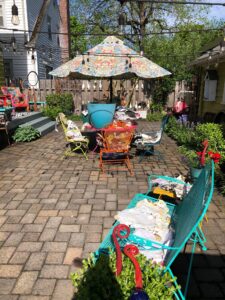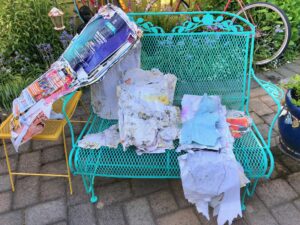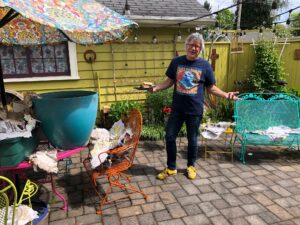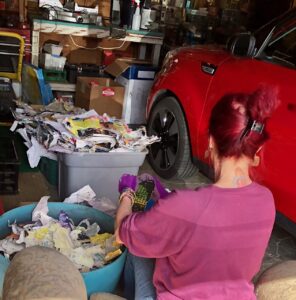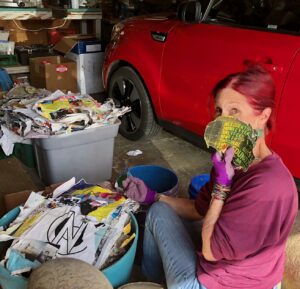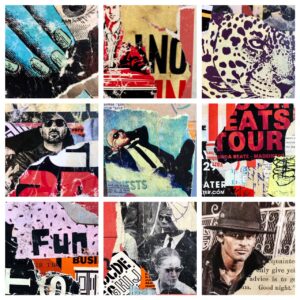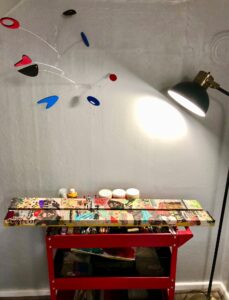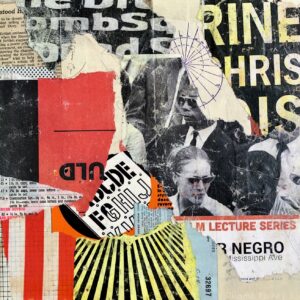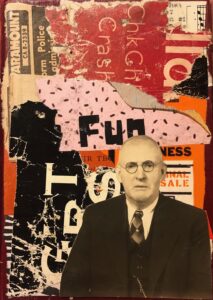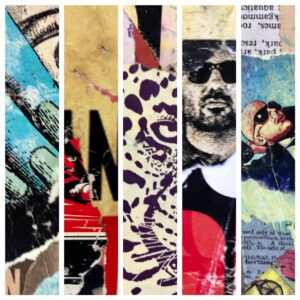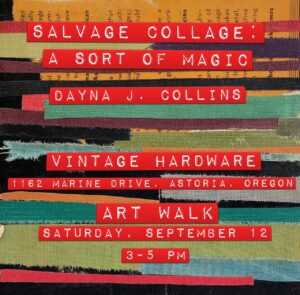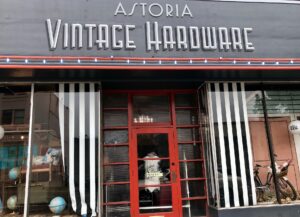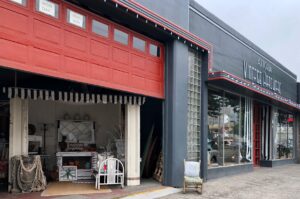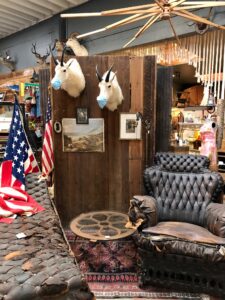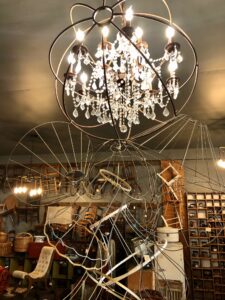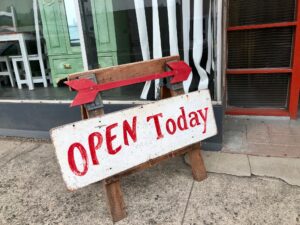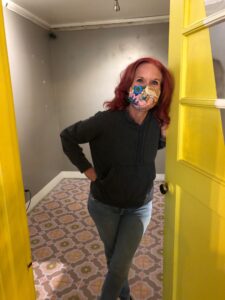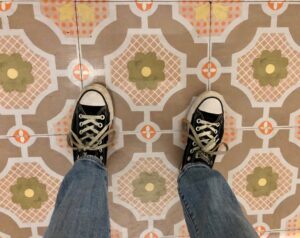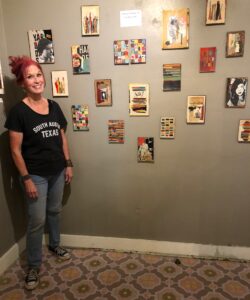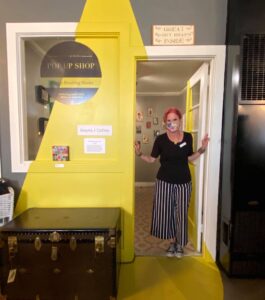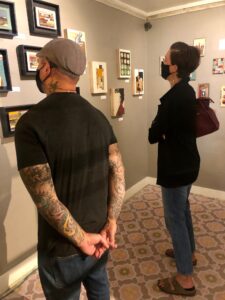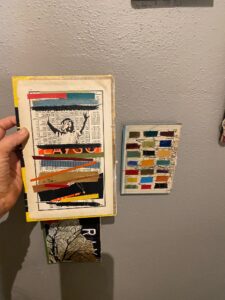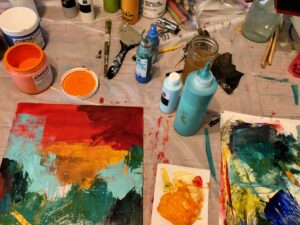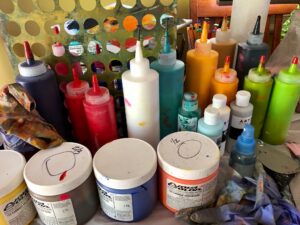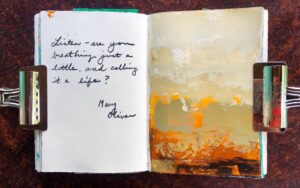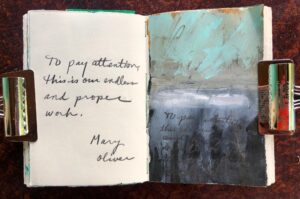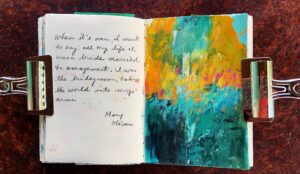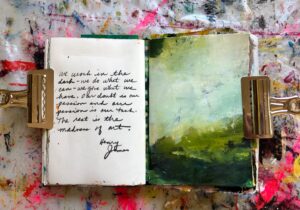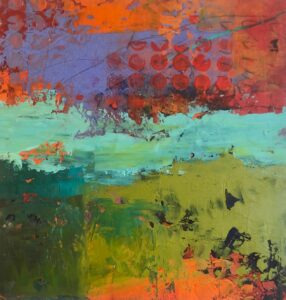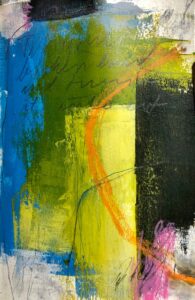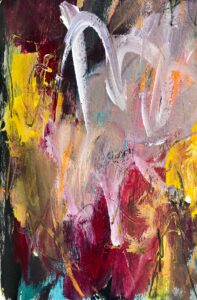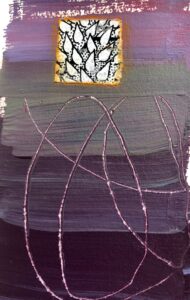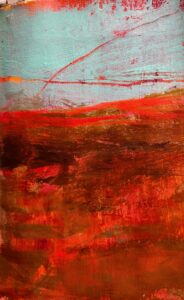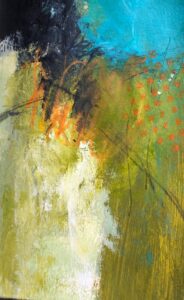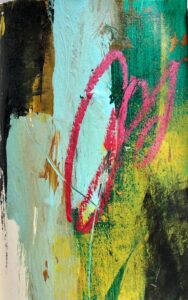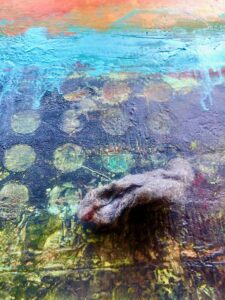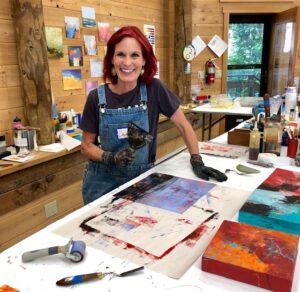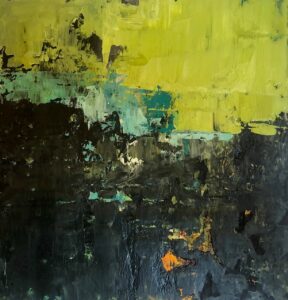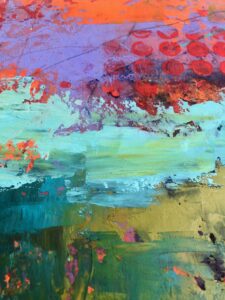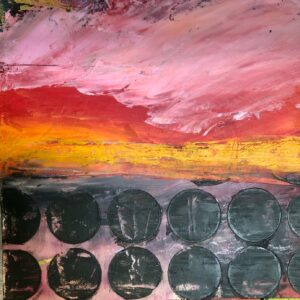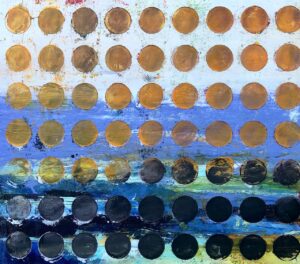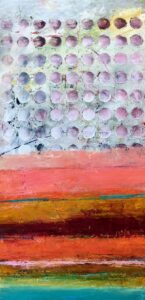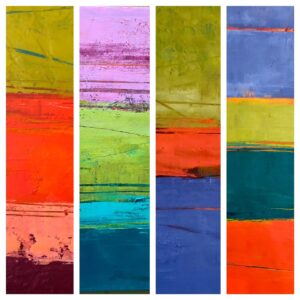
If you read my last post, I shared about my upcoming show at RiverSea Gallery in Astoria and how my initial idea was the theme of waterlines, but somewhere along the way I realized it was no longer a theme I wanted to explore. Instead, I started thinking in bands and swaths of color, a design element I have been smitten with for years. My thoughts went to how I have always been attracted to color field art, so as I painted and worked on my boards, the idea of working in fields of color filled my consciousness. The words Emotional Alignments became the title of my show, and propelled me forward. I knew where I was going and I was excited to get into my studio every day; I had an enthusiasm I hadn’t had in a long time.
After getting all of my boards prepped, I kicked into full time painting, spending several hours a day in my studio adding layers of oil and cold wax. In my last post, I shared the process of how I prepare my boards with acrylic paint, plaster, and more acrylic paint, and now I’m showing and sharing the process of adding layers of oil paint mixed with cold wax.
The first order of business is to mix up cold wax with Galkyd (which helps speed the drying time), then mix oil paints with the wax mixture, making it the consistency of whipped butter (or shortening if you are old enough to remember that cooking staple).
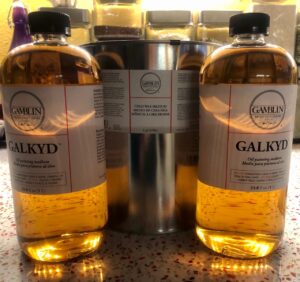
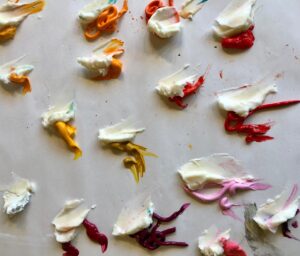
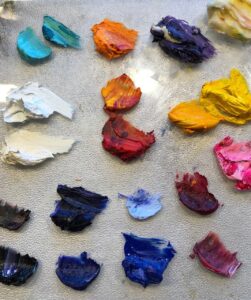
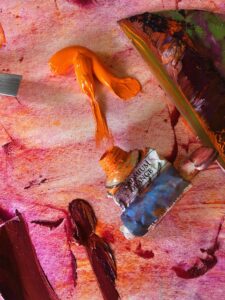
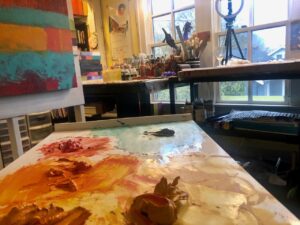
I use the early layers to just get color down so I have something to respond to. I’ve been working on 20 pieces simultaneously, so drying space is at a premium, necessitating spreading out into our bathroom and the upstairs hallway.

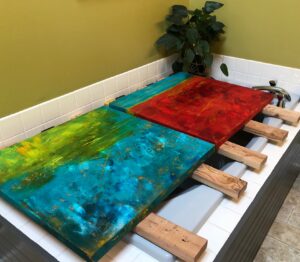
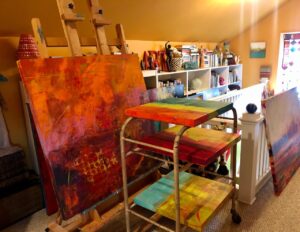
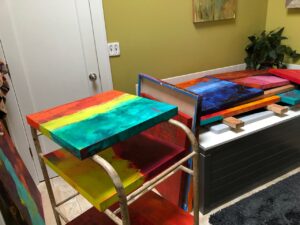
Once I have one or two initial layers of oil and cold wax, often alternating between warm and cool colors so when I’m scratching through the wet paint, the earlier layer is revealed, it is time to begin thinking about a composition. I knew I would be focusing on bands of color, so I just started painting swaths, giving some thought to color, but not too much advance planning at this stage.
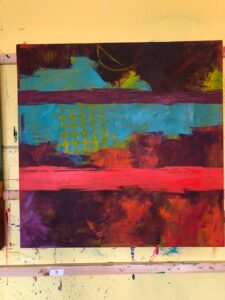

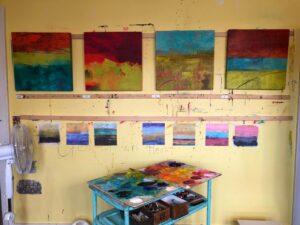
Eventually, I had another layer on the boards and it was time to begin making more informed choices to add variety within the swaths: warm against cool, texture against smooth, bright against dull, light against dark, busy against calm. I had the idea of using paint chips (from the hardware store) to play with color combinations.

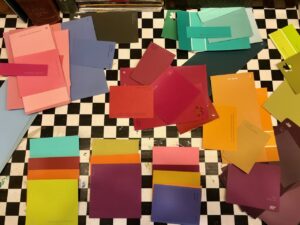
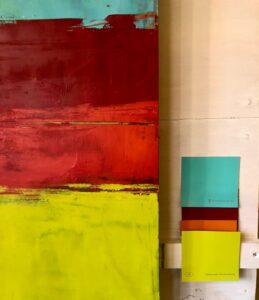

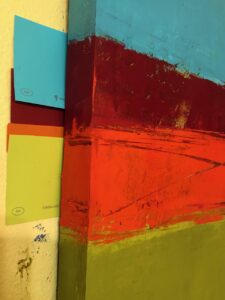
I also gave a great deal of attention to the intersections between the bands of color, the interstices. I have long been fascinated with intersections: drawing into the layers to reveal earlier layers, what colors show through, adding lines of color with the edge of a squeegee, how to create bold interest, how to create quiet interest that invites a viewer to step closer to see the details.
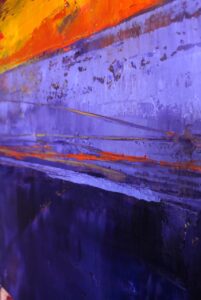
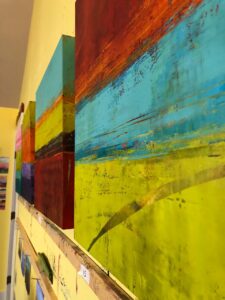
And so it goes. Back and forth, adding, subtracting, standing back, scraping, excavating, laying down more paint. Mental and physical gymnastics.
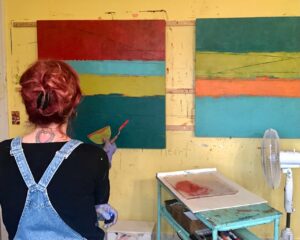
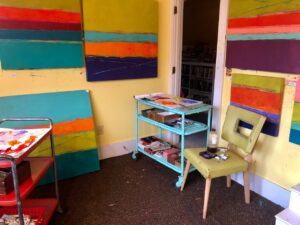
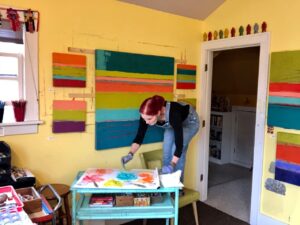

Between painting sessions, is the inbetween, the drying time. I set up a fan and a heater to blow warm, dry air around my studio, a time for the paintings to rest, a time for me to rest. It all seems to help.

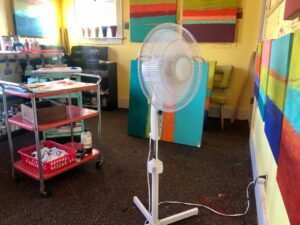
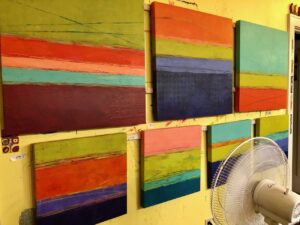
Paintings are being completed and I’m excited about them. They reflect how I have moved through the pandemic, politics, wildfires, and personal traumas this past year. Titling the pieces has been as therapeutic as painting them. I think I might just be okay.
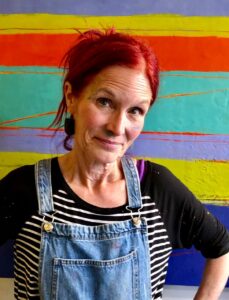
In my next post, I’ll share the completed pieces. The show, Emotional Alignments, opens Saturday, January 9, 2021, at RiverSea Gallery as part of the Astoria monthly Art Walk.
